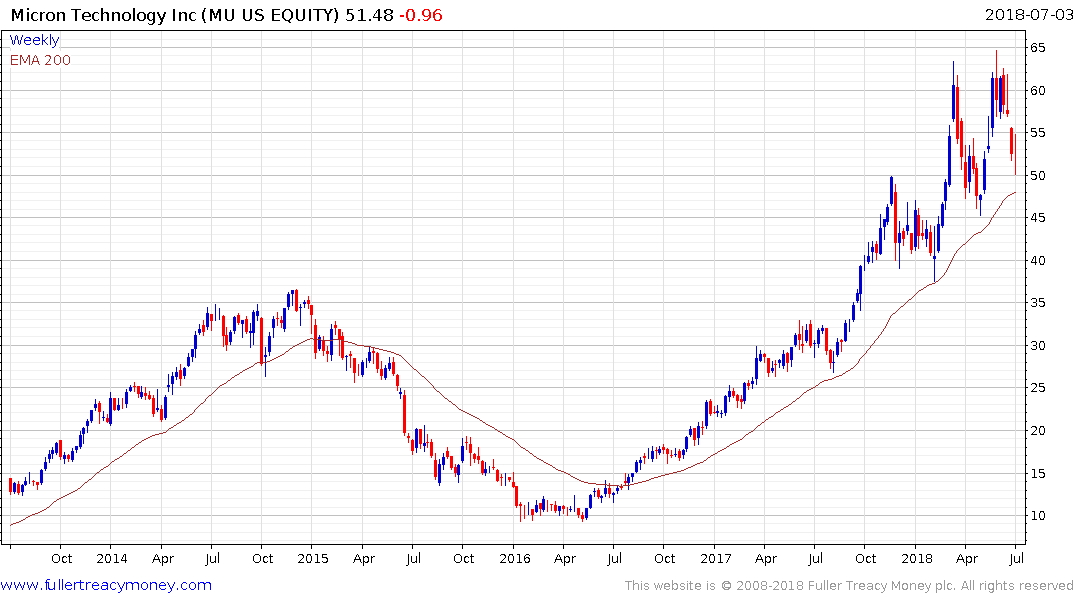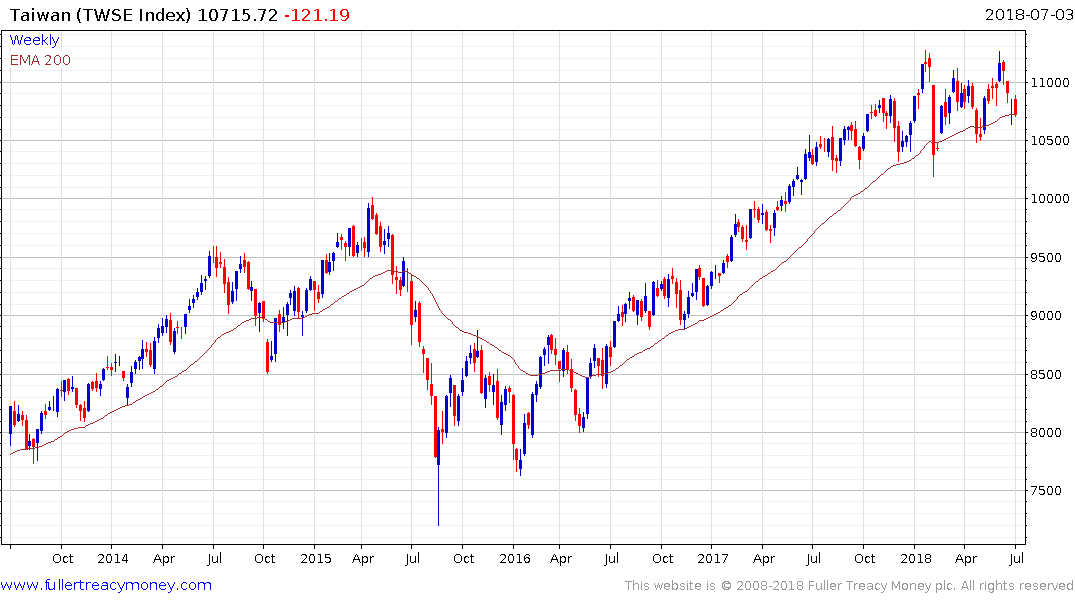Taiwan's Technology Secrets Come Under Assault From China
This article by Chuin-Wei Yap for the Wall Street Journal may be of interest to subscribers. Here is a section:
Taiwanese government officials and company executives say China is deliberately targeting Taiwan, whose manufacturers make chips for the biggest American companies, including Apple Inc., Nvidia Corp.and Qualcomm Inc. They say China aims both to pressure what it considers a breakaway province and to pursue its goal of reducing its reliance on foreign suppliers.
Technology-theft cases more than doubled to 21 last year from eight in 2013, according to official data. Taiwanese authorities and attorneys say they mostly haven’t indicted Chinese entities believed to be the ultimate beneficiaries, often for political reasons and because they don’t believe they would be able to enforce court judgments on the mainland.
While China manufactures most of the world’s smartphones and computers, it imports almost all the semiconductors needed to provide the logic and memory that run the gadgets. Last year, China paid $260 billion importing chips—60% more than it spent on oil. Chinese leaders want homemade chips to account for 40% of locally produced smartphones by 2025, more than quadruple current levels.
China’s Achille’s heel in a trade war is that it depends on imports of semiconductors to fuel the continued evolution of its higher value-added manufacturing sector. It can put tariffs on soybeans but it still has to import semiconductors and that is not only a business weakness but a geopolitical issue for the country.
Moore’s Law ended in 2016 when the global semiconductor industry stopped issuing reports on the expected iterations of efficiency doubling. It is now much more difficult to make large leaps in efficiency since node thickness is approaching the size of a silicon atom. That is why companies are focusing on the evolution of quantum and optical computing as well as cloud services, server farms, graphics cards and new forms of memory. All that points towards an opportunity for China because it has less pressure to keep up with semiconductor manufacturing innovation. It is good enough to simply copy what is in the market today if it can also iterate in the other areas of development.
The big question during the mercantilist era of global trade was what could the West sell China that it did not already have. The East India company landed on the idea of opium which turned into a very profitable business. Today, the issue of unequal trade with China is again a major topic of conversation. China is major importer of commodities and with a large population that is going to remain a fact of life for the country. However, its dependence on technology imports is not something it is going to tolerate indefinitely and industrial espionage is just a small part of the efforts underway to develop a domestic semiconductor industry. It’s also one of the primary reasons China wishes to bring Taiwan back into the fold of the mainland’s administration.

This article from the seattletimes.com covers some additional details on the theft of Micron Technologies’ intellectual property. The share was among the best performers from its 2016 lows but has become a lot more volatile this year suggesting a war is going on between supply and demand. It needs to hold the region of the trend mean if potential for continued higher to lateral ranging is to be given the benefit of the doubt.
![]()
The Philadelphia Semiconductors Index has lost momentum since late last year and is currently steadying in the region of the trend mean. As long as it holds the 1200 level, the benefit of the doubt can probably be given to higher to lateral ranging.

The Taiwan TAIEX has also lost momentum this year and is also testing the region of its trend mean.


